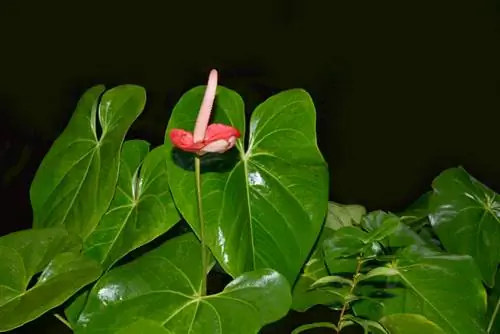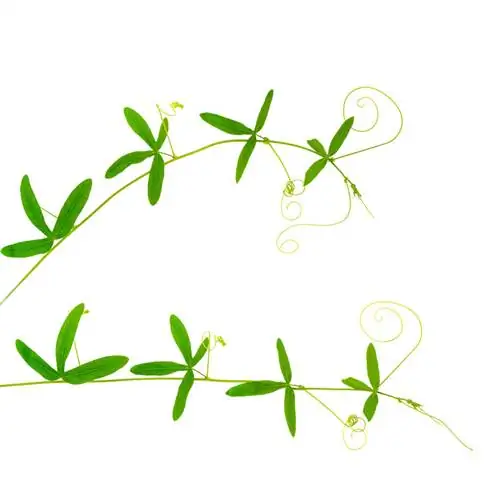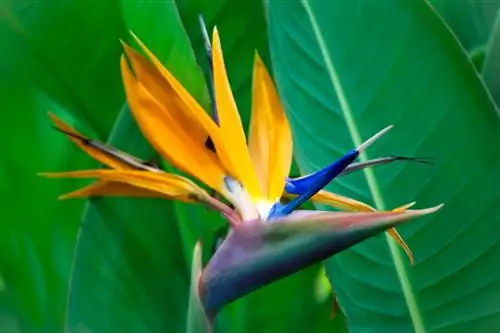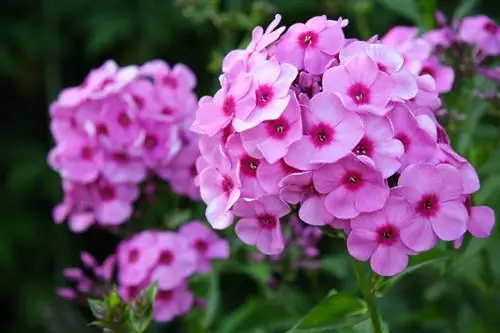- Author admin [email protected].
- Public 2023-12-16 16:46.
- Last modified 2025-01-23 11:20.
If the requirements of the flamingo flower are met, it turns out to be a grateful permanent bloomer that doesn't even go into winter rest. However, things look different if the plant doesn't feel 100% comfortable. Often it produces plenty of foliage, but the beautifully colored bracts with the impressive spadix are not visible.
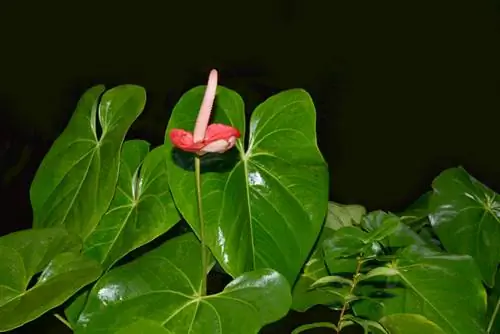
Why isn't my anthurium blooming?
If the anthurium does not bloom, check the location, water supply, fertilization and substrate. A north or east window, regular watering without waterlogging, halved fertilizer dosage and airy substrate such as orchid soil or loosened potting soil are ideal.
In this case, check:
- Whether the plant is in the right location.
- Sufficient watering and fertilization.
- and whether the substrate suits your requirements.
The right location
Anthuriums originally thrive in the rainforests of South America, where they grow on the ground under tall trees or as epiphytes. Accordingly, they need a lot of light, but they do not like direct sunlight or dark shade.
Place the flamingo flower in a north or east facing flower window. Alternatively, you can compensate for a lack of light with a plant lamp (€79.00 on Amazon), which you switch on every hour.
Water and fertilizer requirements
Anthuriums should never dry out completely. If this happens, the bracts and flowers initially wilt and no further buds are formed. At the same time, it is important to ensure that the plant is not overwatered, otherwise there is a risk of rot. Water once or twice a week whenever the substrate feels dry (thumb test).
Fertilization is carried out every fourteen days, but only with half the dosage of fertilizer stated on the packaging.
Wrong substrate
Due to its epiphytic growth, the flamingo flower prefers a lot of air in the root area. A substrate that is too compact can also lead to the hoped-for flowering not occurring. If necessary, repot the anthurium in suitable soil. It grows well in:
- Orchid soil
- Peat growing medium (this requires frequent fertilization)
- Potting soil that is loosened up with polystyrene beads or expanded clay.
The anthurium also grows very well in hydroponics.
Tip
Anthuriums are poisonous and can cause skin irritation on direct contact. Therefore, wear gloves when watering and when working on the plant.

